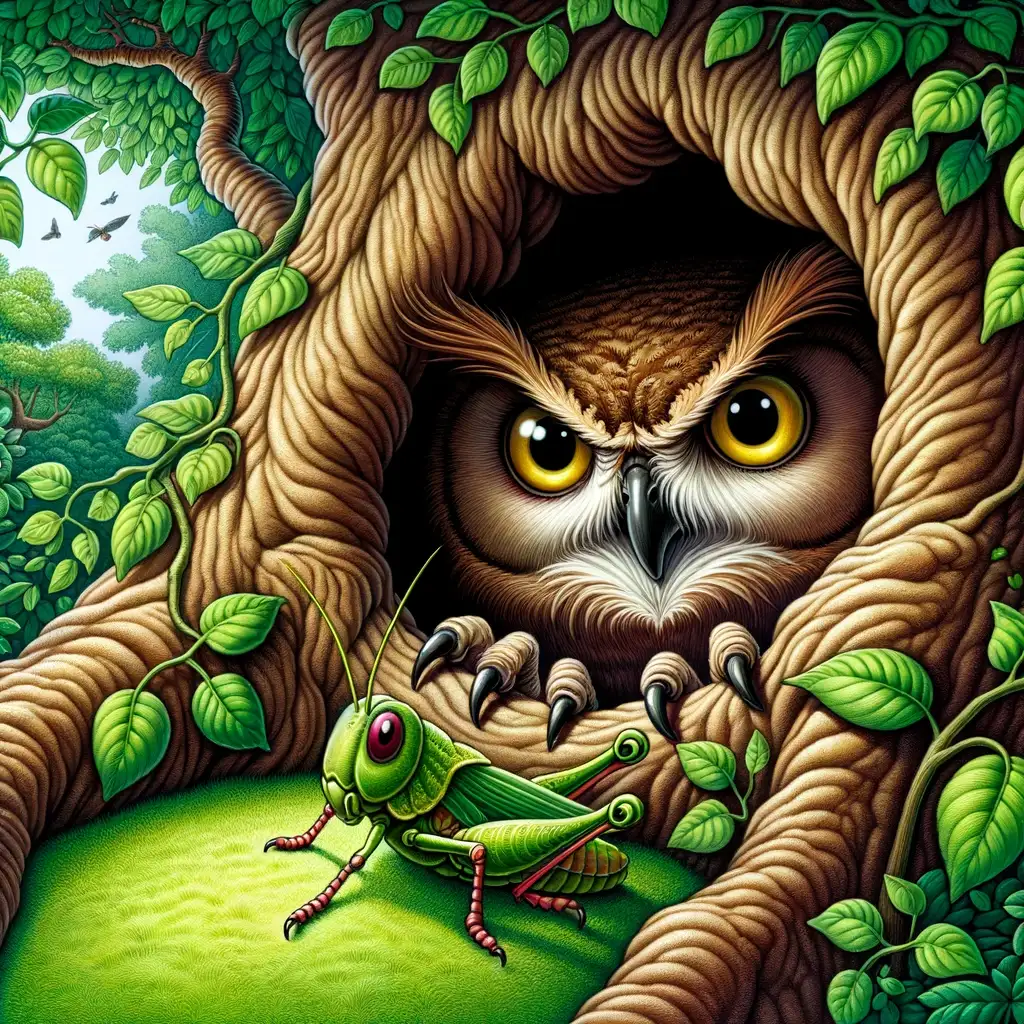

The Owl and the Grasshopper – Aesop’s Fables
Aesop, the ancient Greek storyteller, is well-known for his moral-laden tales brimming with wisdom and life lessons. Among the immense repertoire of his fables, one of the less famous yet deeply meaningful tales is that of ‘The Owl and the Grasshopper’. This vibrant tale of an unlikely encounter between two creatures of different domains – the daylight-loving grasshopper and the nocturnal owl – offers a profound reflection on respecting others’ way of life and the value of peace and solitude.
Chirping Chats: An Owl and a Grasshopper’s Aesop Adventure
In the heart of a lush and verdant forest, the grasshopper, an emblem of daylight and energy, would joyfully spend his days singing and frolicking while the owl, an inhabitant of the night and symbol of wisdom, would sit quietly in her hollow, patiently waiting for the nightfall. One sunny afternoon, the grasshopper spotted the owl and decided to entertain her with his chirpy song. His intentions were pure, but the owl, feeling disturbed by the cacophony, pleaded with the grasshopper to stop.
The grasshopper, however, misconstrued the owl’s request as a lack of appreciation for his music and got offended. In his view, the owl was a gloomy creature who didn’t know how to enjoy life, so he lectured her about the beauty of the day and the joy of his music. The owl, burdened by the grasshopper’s misunderstanding and his relentless chirping, had to make him understand the importance of peace and the beauty of the night that he was yet to experience.
Night Meets Day in Aesop’s Fable: The Owl and the Grasshopper Tale
In this delightful tale of day meeting night, silence clashing with noise, and frivolity encountering wisdom, we find an important lesson: respect for diversity and individual preferences. The grasshopper, in his excitement and energy, fails to understand that his enthusiastic chirping could be a disturbance to the owl, who prefers her solitude and silence. Conversely, the owl, in her wisdom, seeks to enlighten the grasshopper about her world without belittling his.
In the end, the owl invites the grasshopper to stay with her until nightfall, to experience the serenity of her world. The grasshopper accepts and, for the first time, witnesses the peaceful beauty of the night. He learns to appreciate the owl’s solitude and understands that everyone has their unique way of experiencing joy and peace. With this newfound understanding, he apologizes to the owl, promising to respect her love for silence henceforth. The owl, touched by his sincerity, forgives him, and they continue to live in harmony, each respecting the other’s preference for daytime or nighttime activities.
The Owl and the Grasshopper’s tale, like all of Aesop’s fables, delivers a simple yet powerful message about mutual respect and understanding. It emphasizes the need for recognizing and celebrating diversity in all its forms – be it in preferences, habits, or ways of living. This charming fable of harmony, understanding, and respect is a gentle reminder that we all have our unique rhythms and that there’s beauty to be found in the quiet as well as the noise, the day as well as the night. In true Aesop style, it teaches us that wisdom lies in appreciating the differences, not in trying to homogenize them.


